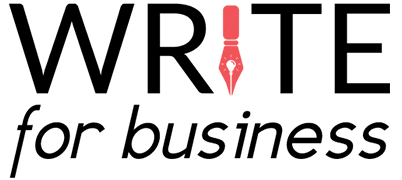10 Critical Features of Successful Marketing Ebooks
By Helen McCrone, B2B Copywriter
Ebooks are a great way for a business to generate leads and build a healthy email list. As the Content Marketing Institute explains, these lead magnets are much more likely to elicit an action from your website visitor (like giving you their email address) than other forms of marketing because of the valuable information they offer your audience.
But why do some marketing ebooks work as a lead magnet while others fail to live up to their promise? What do you need to do when creating an ebook to ensure its success?
Read on to discover how what your marketing ebook needs to generate those all-important leads.
1. Solve a common problem that confronts your target audience
It’s an obvious point to make, but I’m going to make it anyway because so many ebooks fail on this first and most crucial point: make the topic of your ebook something the people you’re targeting actually want to read.
When brainstorming a topic, ask yourself what the most pressing problem is that’s confronting your audience. What are their most desired goals? What’s top of mind right now? If your book doesn’t address a pain-point or present a solution to a widespread problem, people aren’t going to trouble themselves to download your book in return for giving you their name and email address.
2. Make the title clear, specific and beneficial
It’s important that you come up with a great title for your ebook. After all, this is what’s going to catch the eye of your audience and pique their interest. Don’t worry about being too inventive. A title that is too entertaining or relies on clever word play can end up going over the audiences’ head. Clear, simple titles win hands down.
Look at these great examples:
7 Questions to Ask Before You Choose a Virtual Accounting Service
Inbox to Invoice: 5 Sales Email Techniques to Close the Deal
A Patient’s Guide to Enrolling in a Cancer Clinical Trial
The Definitive Guide to Landing Page Optimization for In-House Marketers
Can you spot the characteristics of these winning titles? Each one:
communicates clearly a promise,
appeals to the audience’s self-interest,
arouses curiosity or offers the reader something useful, and/or
speaks to a specific audience.
If you can incorporate these features into the title of your ebook, you are halfway to success.
3. Make the content readable
Ebooks are much lighter in tone than white papers, their more serious cousins. The person downloading your booklet will be expecting an easy, informative read, not a slow trudge through a dry, academic paper or formal product brochure.
To make your content readable, use short sentences and plain English. Use a voice that matches the one used by your target audience, and avoid jargon unless your target audience is already familiar with it (so if you’re writing for accountants, it’s probably okay to mention P&Ls, CapEx and acid test without further explanation).
Try to inject a conversational tone into your writing. You want to come across as not only professional but also approachable. A quick way to test the tone is to ask yourself if you would say your phrase or sentence in a face-to-face meeting with a client. If you’re writing skills aren’t up to scratch, you need to hire a professional ebook writer – preferably one trained to write ebooks.
4. Make the design appealing
Making an ebook or any other type of promotional content readable is not just about your words or writing style. It’s also about the layout of your content. You need to make your ebook ‘eye-friendly’. These days, readers appreciate white space, short paragraphs, sub-headings, bullet points and graphics to make content more inwardly digestible.
Design elements that can transform an ebook’s content from ordinary to impressive include:
- Bold, interesting images for the cover
- Brand colors to reinforce a brand’s identity
- Large headlines that summarize the text below
- Simple graphs to make hard data easy to understand
- High quality imagery that is clean and uncluttered
- Visual elements such as pull-out quotes to break up large text blocks
Column Five Media has 75 great examples of nicely designed ebooks. Go check them out and get some inspiration.
5. Optimize your ebook for search engines
Just because your ebook is going to be published in PDF format, it doesn’t mean you can skip the usual SEO good practices.
Yes, Google will crawl, index and rank your ebook as if it were a web page. And since your ebook will have much richer content than a standard web page, it’s likely to attract more search traffic than a standard web page.
This is great news for your lead magnet, as long as you find all those keywords that your customers use when talking about your product or service. Look for natural-sounding, multi-word phrases that attract significant searches but aren’t too competitive.
When doing keyword research, think like your customer, not your sales rep or engineer. What words do your customers use? How do they phrase their questions? Keyword research can be tricky and time-consuming and, since this is a crucial part of your ebook’s success, you might want to consider hiring an SEO specialist to do this on your behalf.
Once you have your list of keywords, you need to ensure they’re used strategically throughout your ebook. Search Engine Journal has an excellent article on how to make PDFs search-engine-friendly. Make sure the person writing your ebook understands these SEO requirements. If they don’t, consider hiring an SEO copywriter.
6. Make it more in-depth than a blog post (but don’t write a tome)
Anyone going through the usual opt-in hoops to get a hold of an ebook will be anticipating a good read, so don’t disappoint. This is your chance to showcase your expertise. A thin ebook that doesn’t deliver on its promises will only damage your credibility.
Sure, the primary reason for offering an ebook is generating leads. But it doesn’t end there. Companies have a host of other reasons for publishing an ebook, including strengthening the brand, demonstrating trustworthiness, positioning the company as a knowledgeable resource, and encouraging subscriptions.
All this means your ebook needs to be meatier than the average blog post. On the other hand, you don’t want to end up writing a 100-page volume. You’re producing an informative booklet, not a book for learned scholars.
The average ebook is around 10-12 pages, but there’s no hard and fast rule. In fact, I've noticed a trend in some industries (such as marketing) for more pages and fewer words on each page. The idea behind this is to keep both reading pace and engagement high.
I would say the typical word count of most informative ebooks is probably between 3,000 and 5,000 words. No matter how many words you write though, make sure the final version is readable and delivers on its promise.
7. Include a call to action at the end
It’s vital you tell readers what to do after they have read your ebook. If you think that’s too obvious, think again. Even the most interested reader needs to be guided to the next step. It can be as simple as telling them to review a product on your website, arrange a visit from a representative, or sign up for a free trial.
Whatever your call to action is, make it specific. Rather than ‘Please contact us at…’, write something more persuasive like ‘Call today for a free 15-minute consultation with one of our accounting software specialists’.
And don’t forget to insert your contact details (some do forget, believe it or not).

8. Create a downloadable, printable format
Most marketers prefer their ebooks to be published in PDF, and it’s easy to see why. The Portable Document Format can be:
created in-house quickly and easily with standard software
opened on any device without disturbing the content’s integrity (including smartphones)
compressed into a small, shareable file size without reducing image quality
integrated with different types of content such as text, images, animations, audio files and even hyperlinks to create an appealing and interactive document
produced as a searchable document, making it findable by human readers and search engines alike
Documents produced in PDF look professional and they can be downloaded and shared with ease. What’s more, PDF is a format that is recognized around the world, making it an international de-facto standard for exchanging documents and information.
TIP: Before you publish, test your ebook is printer-friendly and mobile-friendly by printing it out as well as reading it on your smartphone and tablet.
9. Develop a solid landing page to encourage opt-in
There’s no point spending hours or weeks creating your ebook if you’re not going to promote it properly, and a landing page is an essential part of your promotional campaign.
Why have a landing page? Unbounce, the landing page experts, put it this way: “you need a dedicated landing page that tells readers exactly why your ebook is a must-read.”
No matter how ready we think we are to download a product such as an ebook, there’s always an obstacle that makes us think twice. Will it cost me anything? Will it really teach me something new? Is there a catch?
You want to encourage your website visitor to jump that final obstacle and hit ‘download’. That requires a well-written, well-designed landing page. The most effective landing pages always have:
- an eye-catching headline and sub-heading
- minimal copy that describes what the ebook is about
- bulleted text and short paragraphs
- an uncluttered, colorful design with a suitable image
- the all-essential call to action and a highly visible CTA button.
Don’t overlook the word “free”. It’s powerful, and it reassures visitors that they won’t have to pay for your ebook. Add a logo linked to the homepage as well to give our visitor an easy out.
10. Capture the reader’s contact details
Most companies put a form on the landing page of their ebooks to capture some basic information about the reader (i.e. the prospect). The reader can download the free ebook only after they’ve entered a few basic details such as their name and email address.
The download triggers one or more automated email messages that end up in the inbox of the prospect. These messages can (and should be) tailored according to the ebook’s topic and the reader’s details. It’s a great way to build a healthy email list of prospects, and it’s one of the reasons that ebooks have become so popular with all types of businesses.
TIP: Keep your info requirements short and sweet. The more details you ask for, the more likely the chance that the visitor will leave without downloading.
So, there you have it. Ten features of a successful ebook. If you reckon I’ve missed an essential feature, let us know below. Thinking of publishing your own ebook? Check out my ebook writing service. Thanks!
